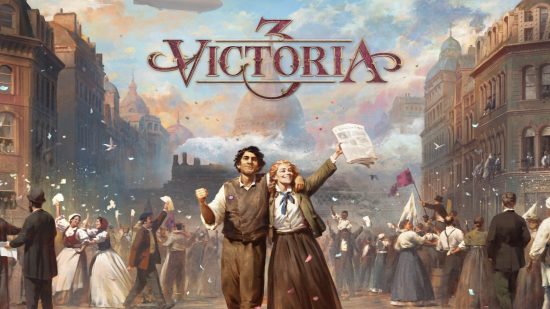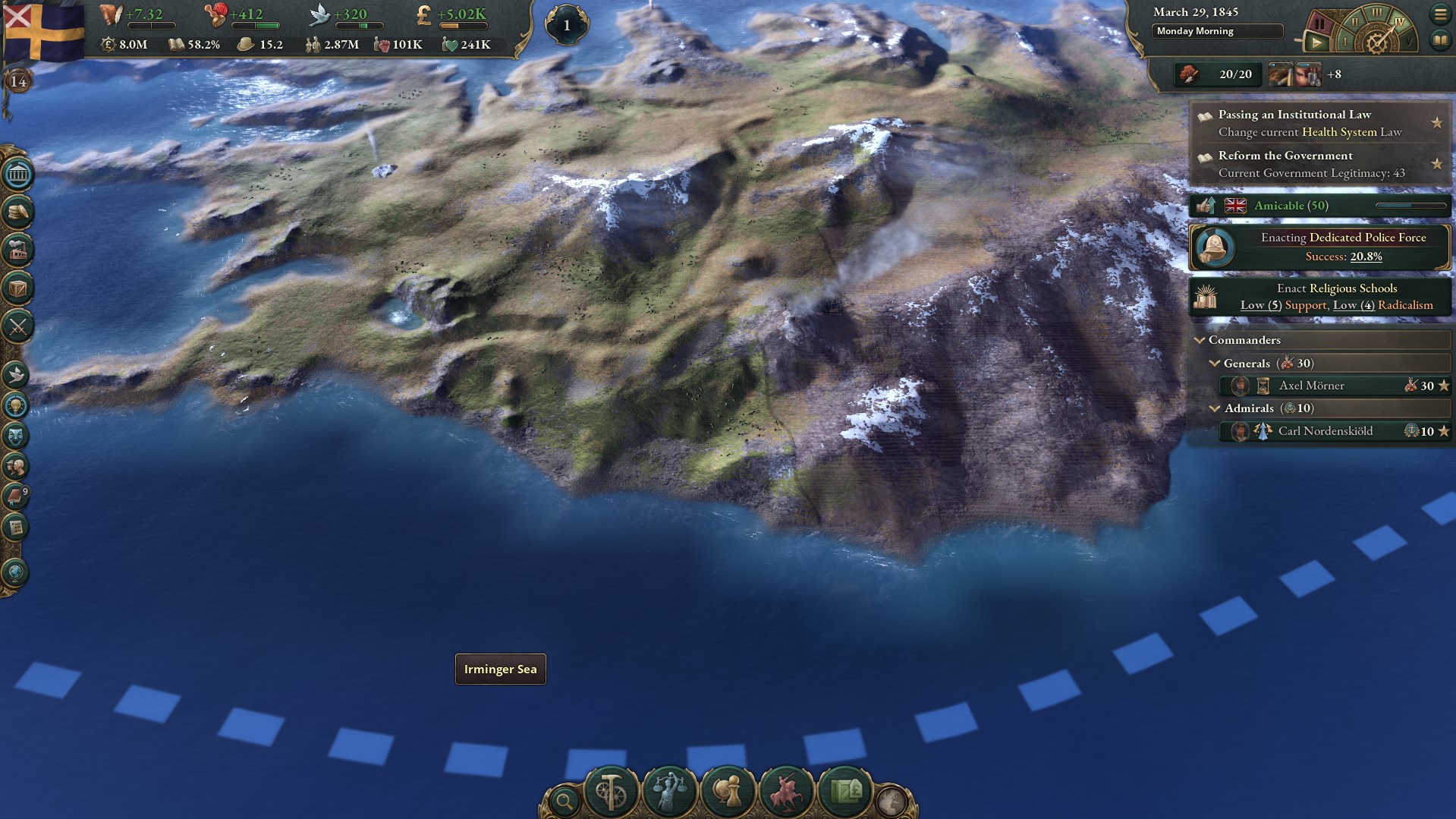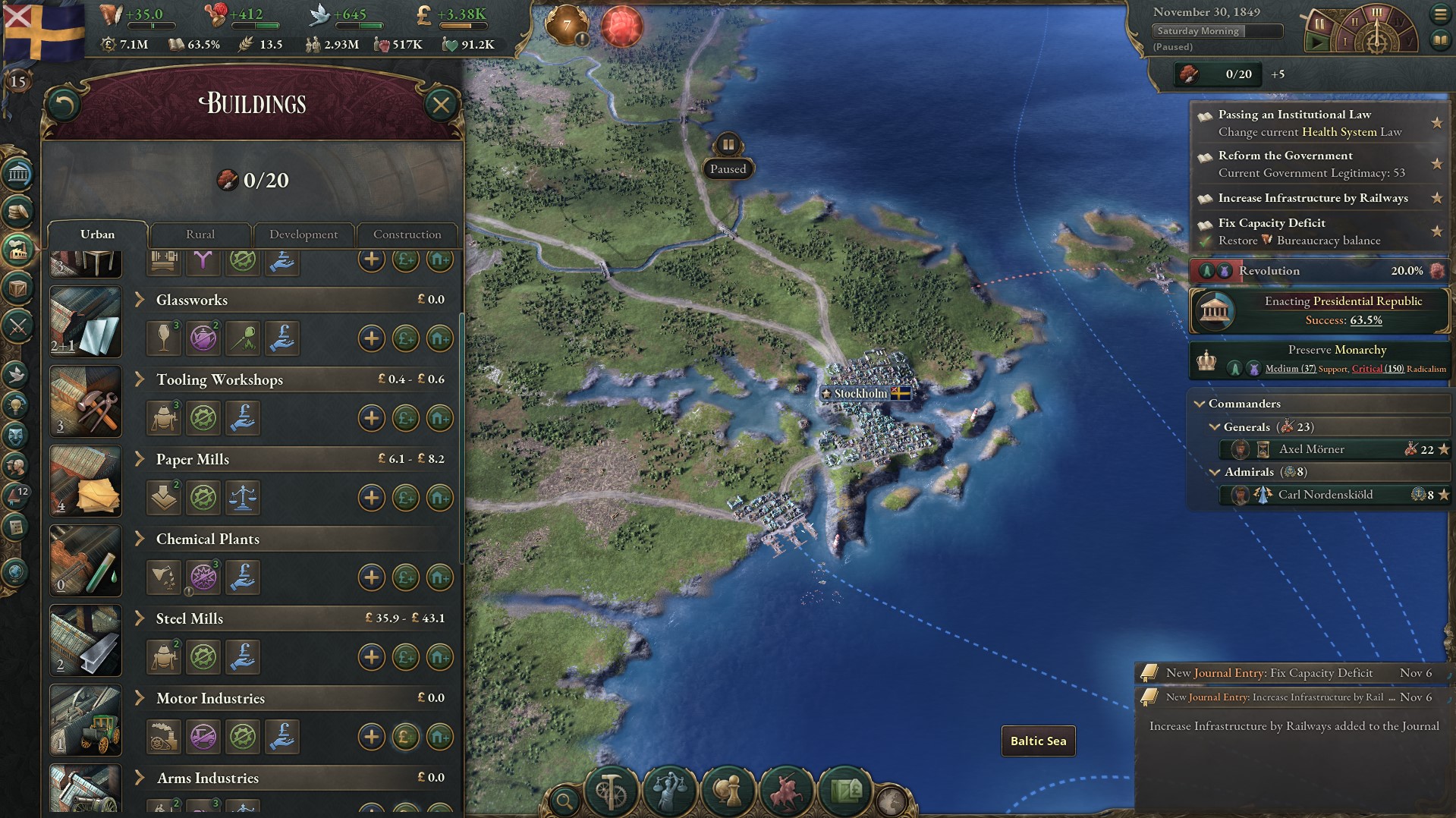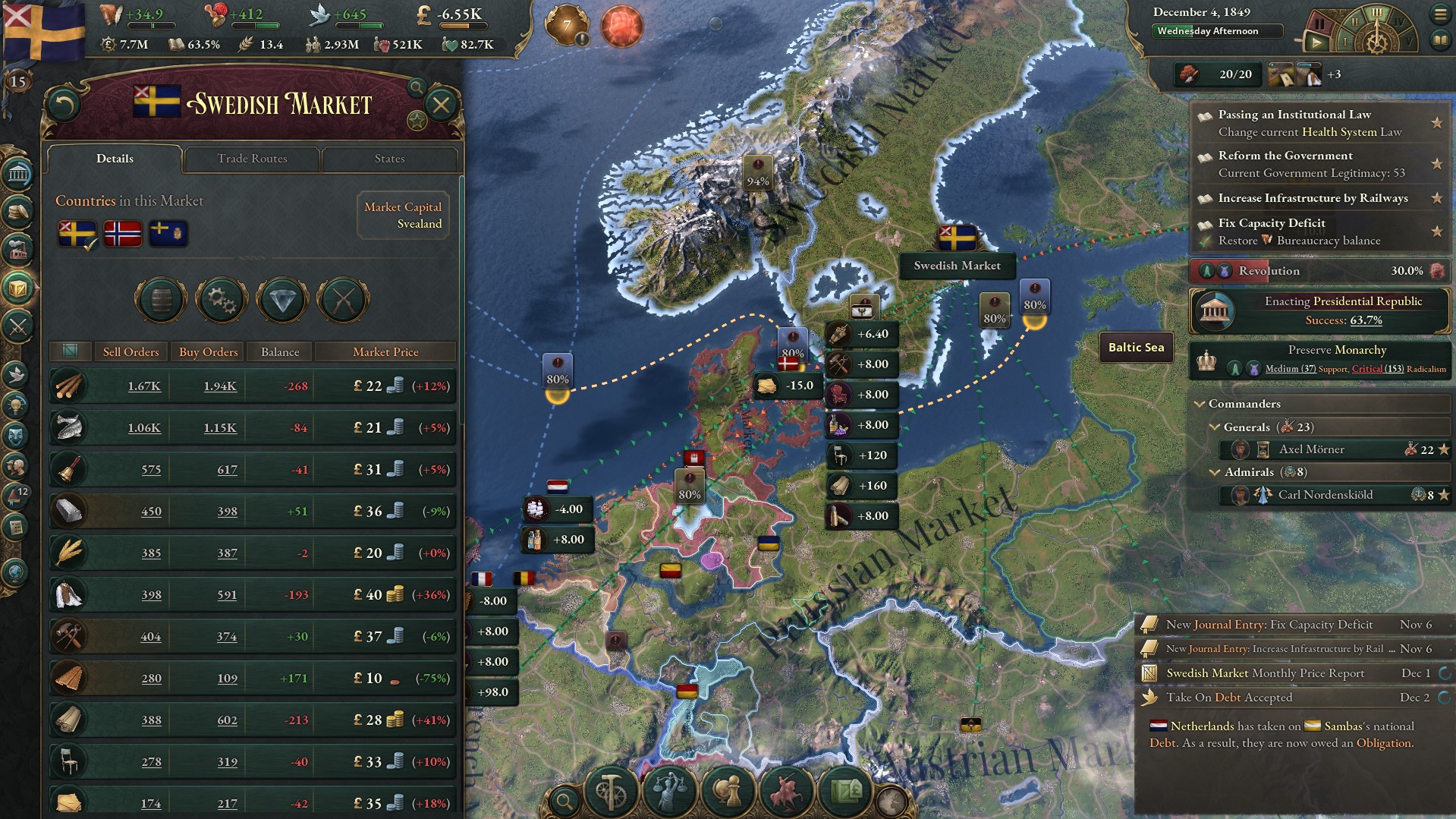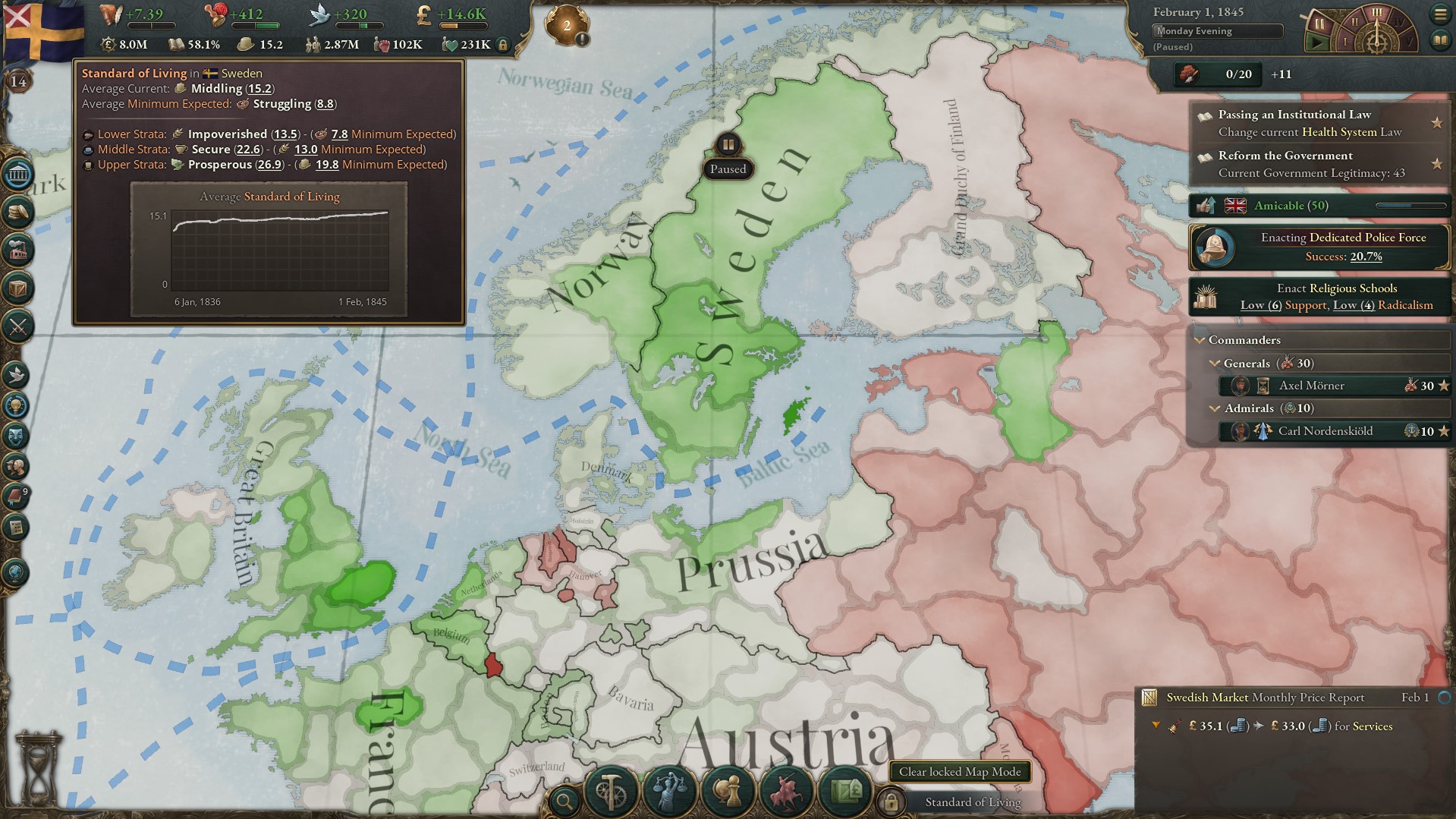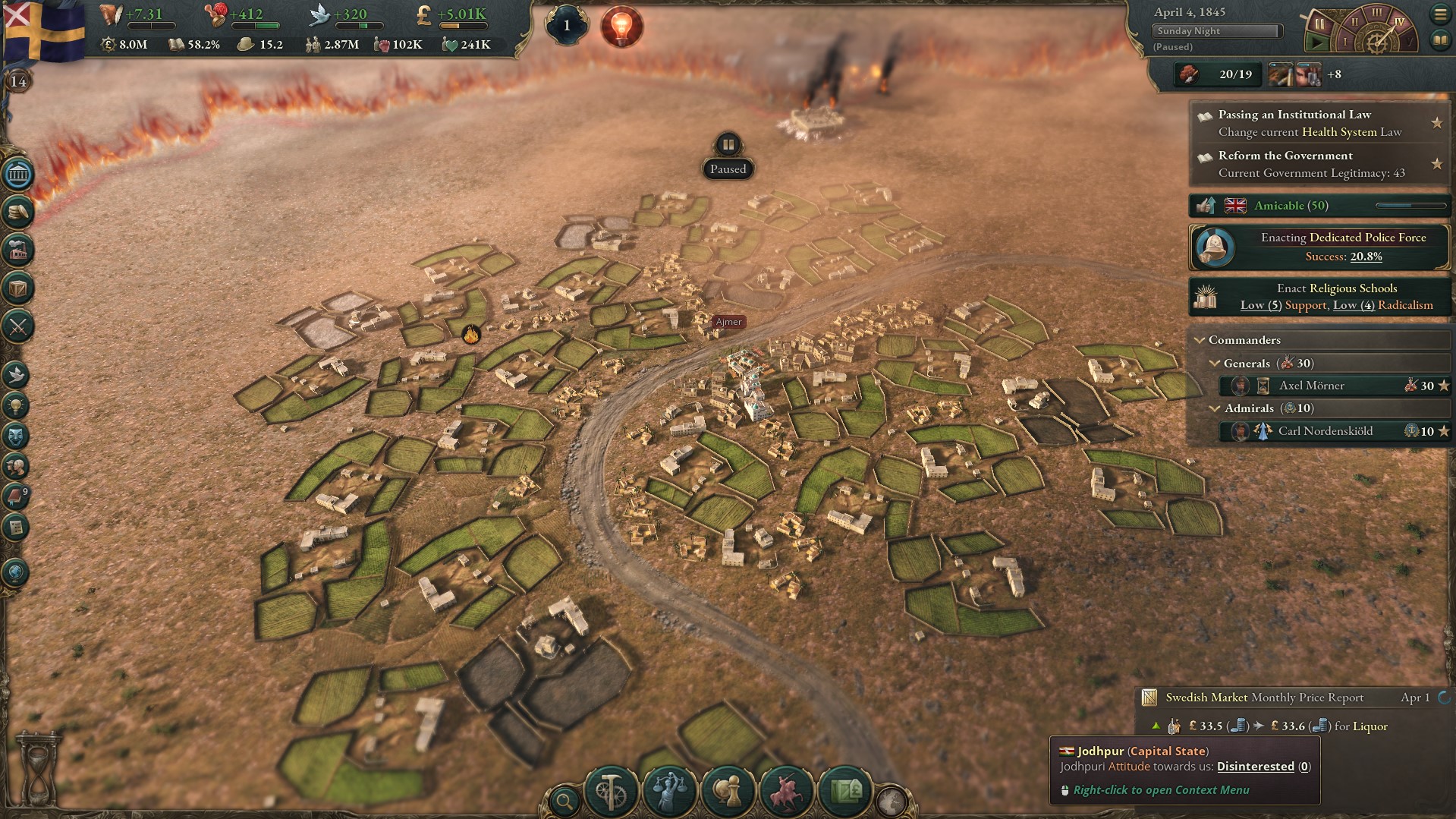24/10/2022 Check out our full Victoria 3 review
If you’re really into your crunchy PC video games, you’re probably well aware by now that Paradox’s long-awaited historical grand strategy title Victoria 3 is on its way this October. If not, then now you know: game’s coming October 25. For a week and a bit I’ve been hanging around in the 19th Century in a Victoria 3 preview build, tinkering with trade routes, building nations, and fumbling my way through various minor calamities, while gradually getting to grips with a whole lotta systems and more nitty gritty stats and values than you can shake a Victorian gentleman’s walking cane at.
This is a Paradox title we’re talking about, so it perhaps goes without saying that after my first couple dozen hours of playtime, there’s still plenty I’ve not seen or fully grasped. I can say, though, that during my time with Victoria 3, I found it to be much the deep and engaging game series fans will be hoping for, but also one that is likely to ensnare a wider audience than its decade-old predecessor.
One reason for that, and no doubt the first thing you’ll notice upon booting up Victoria 3, is what an unusually pretty strategy game this is. It’s a joy to zoom into the world map and see so many meticulous terrain details, from forests to sparkly seas you’ll wish you could dive right into. The visuals aren’t static either – geysers erupt in Iceland, palm trees sway pleasantly in Polynesia, birds circle overhead all over the place. This isn’t purely window-dressing; the terrain mode provides a satisfying visual representation of how your nation is progressing. Buildings you construct show up, and as urbanisation spreads, settlements sprout as well.
Fans of the previous game may have a fondness for its more spartan style, but this new attractive aesthetic will doubtless make Victoria 3 more engaging for more people. My only complaint is that, right now, the game switches you to terrain map mode automatically when you zoom in, as if demanding you admire the view. I’d like the option to get in close with the straightforward block colour map mode if I want to, thank you very much.
It’s not simply the pretty pictures that make Victoria 3 more accessible, however. The UI takes its cues from Paradox’s most recent title CK3, with that same tooltip system that lets you hover your mouse over unfamiliar terms, flitting between definitions of obscure keywords and receiving handy explanors on its systems. That, and a fairly robust set of tutorials which not only guide you towards targets but also spell out, in detail, why you should attempt them, meant that getting started actually playing Victoria 3 was way easier than it might’ve been.
What does playing Victoria 3 involve then? Well, while engaging with politics, diplomacy, and research are all important considerations, and every system in Victoria 3 is thoroughly intertwined, the thing that required the most hands-on micromanagement during my tenure as invisible god-king of Sweden was handling the nation’s economy and resources.
This is done primarily through buildings – from mines to universities – that are worked by pops of various professions to turn resources like iron or fabric into more refined products, like steel or clothing. Rather than tracking the exact amount of coal, rifles, and radios your nation has, like Victoria 2 did, goods are handled in a more abstract way in Victoria 3. The amount of goods you bring in and the amount you consume creates buy orders and sell orders, representing supply and demand, which set prices in your country’s market.
A good’s price will affect all sorts of stuff, from your income (the government has to buy everything from paper for the filing cabinets, to guns and possibly opium for the military), to how profitable buildings that use that good are, to the standard of living of your population (your ‘pops’). Overall, you want to slowly increase your country’s production and keep prices low, to improve the pops’ wealth, so that you bring in more taxes and have more revenue to spend on further upgrades. But it’s a tricky balance. If a good gets too cheap and the materials needed to make it cost too much, your buildings might no longer be profitable, meaning wages go down, and no one wants to work in your factories anymore.
Your role in controlling this goes beyond establishing trade routes and deciding what buildings to construct and when to expand them. Each building also has many different production methods which change the way it works, altering the type and amount of workers needed, goods produced, and materials used. You might introduce new technology that reduces labour requirements for instance, or decide that your fields should produce apples as well as grain.
Altogether this adds up to a pleasantly complex yet immediately approachable puzzle that makes for a fine core gameplay loop. You’re constantly required to monitor the prices of goods, and you’ll usually spot multiple routes you could take to improve your situation and ultimately keep that GDP and standard of living ticking up. Paradox have been clear that war is not the focus of Victoria 3, and beyond a minor opportunistic skirmish to puppet the state of Oldenburg, I mainly stayed out of conflict. I found it was satisfying to play the pacifist, without the rampant expansionism you normally find in grand strategy games.
Other aspects of Victoria 3, such as pops and politics, are fascinating systems, though less immediately intuitive. With the economy, bigger tends to be better, but when it comes to changing your country’s laws or adjusting your pop types (the latter also often done through buildings) your goals can be more open ended. It seems like you’ll generally want to move towards a more urban, educated, free populace – but it’s a balancing act. Change things too fast, before you’ve created a powerful, large intelligentsia or labour movement, and you’ll create unrest and riots – as I found out when, deciding I was well on the way to making a Scandinavian democratic paradise, I tried to do away with the king. Keep your pops under the yoke for too long, however, and you’ll encounter many of the same difficulties.
The types of production you set up determine what professions your pops can have, which influences their loyalties. There are numerous interest groups, from landowners to the church, and different types of professions will be attracted to different factions. The people in charge of these factions – depicted with CK3 style character models – have personalities, and whether the head of industrialists is, for instance, a republican or a staunch monarchist can make a big difference in how the entire group behaves. You can put whichever interest groups you like in power, and this will determine the laws you can pass, while the legitimacy of your chosen government will determine how difficult it’ll be to make changes.
When playing Victoria 3, your preferred gameplay style will dramatically alter the way things turn out, as will your choice of nation. In my ivory tower of Sweden, where I spent the majority of my playtime, I mainly focused on making my people super duper happy and rich, (and occasionally suppressing violent royalist uprisings). In a quick session with Egypt, which is well-placed to create its own hegemony, I had a greater look at war, and also got my first glimpse at the darker side of Victoria 3 (and the time period it depicts) with the appearance of atrocities like slavery and colonialism. Gonna need some more hands-on time with Vicky 3 to comment on how these sorts of subjects have been handled, I think.
In war, there’s clearly a lot of stuff going on under the hood, as the sheer quantity of stats on display in battles will testify, but the basics of it are pretty, well, basic. As Paradox have said, war is important, but not the most important feature in Victoria 3. The outcome of the battles I fought usually came down to numbers or which side was better equipped (as you might expect). The diplomatic manoeuvres mechanic, by which you can make gains by threatening war until your foe backs down, never seemed to quite work out for me, but it may just be that I always demanded too much, or never had the overwhelming force required to impose my will without firing a shot.
One thing is for sure, Victoria 3 has a ton of replayability, even if you stick to one nation. My successful, utopian Sweden only blossomed during my second attempt at the game. My first go at running that country went south swiftly, as I ended up caught in the crossfire (and became the chosen battleground) in a war between the world’s greatest superpowers. Incidentally, one thing I do think needs tweaking is that countries should be much better at defending their shores. Britain seemed to let the Russians rush right into London, and I know other journos saw a similar thing play out.
You’ll have to await our full review, once we’ve really sunk our teeth in, to get our complete thoughts on Victoria 3, but I’ve thoroughly enjoyed wiling away the hours with this strategy title. On the top level it’s got the depth it needs to have, while also being more approachable than I expected. And of course this is a Paradox game, so looking at it (for better or worse) as a base product that’s bound to be expanded upon in all sorts of directions in numerous DLCs, I think it’s in a really promising state.
